HI6091: History in Queen’s College Cork Classified Catalogue – Online Work Placement in Special Collections (2020)
- Elaine Harrington
- January 28, 2021
The River-side welcomes this guest post from Andrew Neville, a student on the 2019/2020 MA in Medieval History in UCC, that includes the HI6091: Skills for Medieval Historians module. Andrew Neville spent two weeks investigating digital catalogue projects, how university collections evolve in response to changing disciplines, and how individuals respond to items in the collection. Andrew previously wrote a blog post “Fashion and Rags” as part of The Mapping Cork: Trade, Culture and Politics in Late Medieval and Early Modern Ireland student exhibition hosted on The River-side.
Books’ Catalogue, Queen’s College Cork, 1860
To celebrate the 175th anniversary of the founding of UCC, this blog post will look at two works donated to the College, and now in Special Collections, and recorded in a catalogue printed in 1860, when the College was known as Queen’s College Cork. This blog will show how these two works still remain useful in medieval Irish studies.
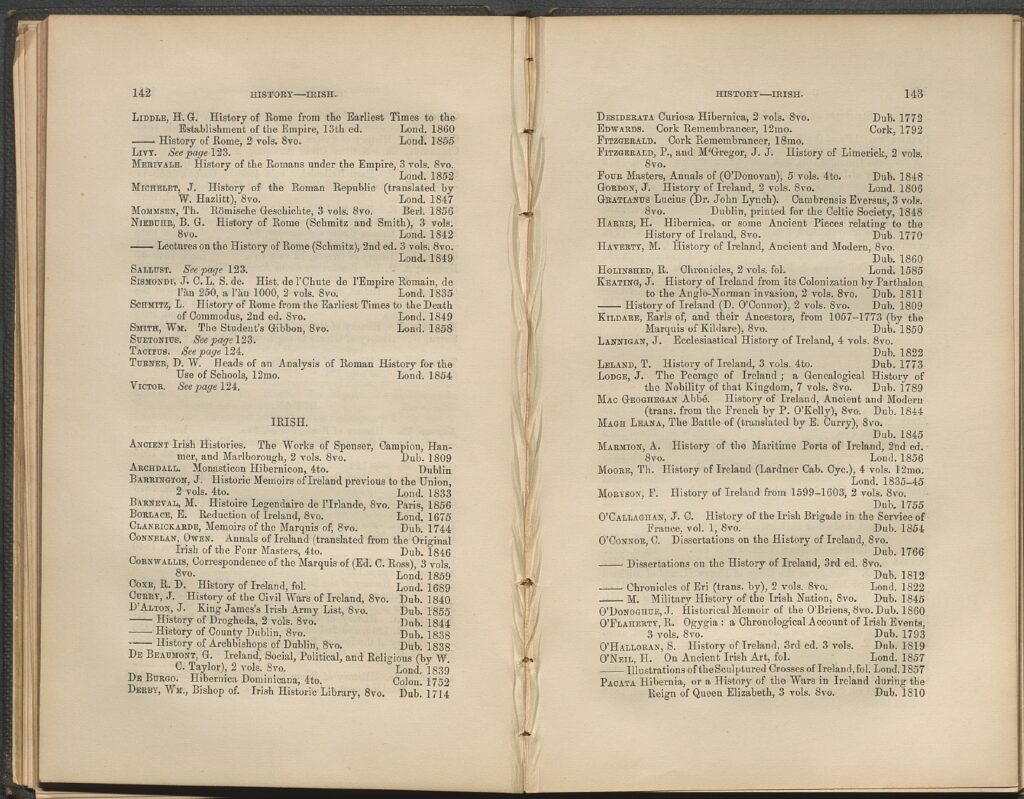
Annals of the Four Masters
The first book is a nineteenth-century printed edition of the Annals of the Four Masters. Although I have been familiar with the references to these Annals, I typically used the online version of the text available on the CELT website. Working with a printed copy of the Annals offered me an opportunity to appreciate their full contents and to understand better the scope of the task set out by the seventeenth-century historians who compiled the Annals. Despite its age and the countless pairs of hands who have held the book and leafed through its pages, the book was still in good condition. It is important, however, for the student to remember that these nineteenth-century books are to be treated delicately and with the respect their age demands. Beware all ye who would dog-ear a page!
Before even beginning to examine the book’s contents, the book’s physical condition teaches the student how to handle old printed texts. Although this edition of the Annals did not require me to wear gloves to protect its pages from the effects of human touch, a correct placement of the book upon sponge support pads as well as careful turning of its pages were essential. This book’s spine was strong but still needed gentle support and handling. The book must be allowed to part its pages on its own in the manner least taxing to the binding and once open, the pages can be carefully sifted through, which recalls the work of a medieval monk inside the scriptorium.
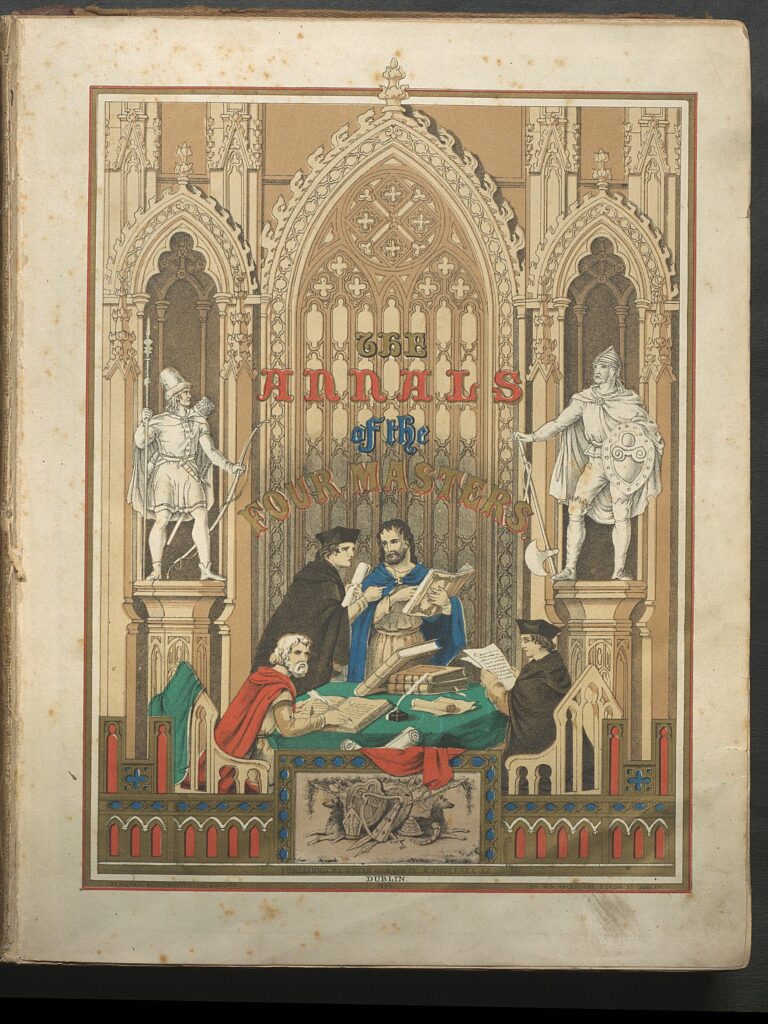
The Four Masters who compiled the Annals in the early seventeenth century were Franciscan friars who worked under the patronage of Fearghal Ó Gadhra, Member of Parliament for Sligo and Lord of Coolavin. Their Annals record the Irish history from the time of the biblical flood dated by the friars to 2,242 BC to the year 1616AD. Chief amongst the compilers was Brother Mícheál Ó Cléirigh. The nineteenth-century edition held by UCC Library is a translation from the original Irish by Owen Connellan. This edition details the events beginning from 1171AD and so allows the student a glimpse into the later medieval times and the early modern period in Ireland. The events recorded by the Four Masters are laid out in a factual, almost bullet point fashion.

Working with Primary Sources – Part 1
Although individual events may lack details, the brevity of the accounts allows the student to gain an outline of the Irish history up to the early seventeenth-century. The accounts provide a roadmap for the student to navigate through Ireland’s recorded past with each recorded detail giving interesting information on persons, places and events, thus allowing for further research. As the student of history, let alone medieval history, progresses through their degree more and more original research will be encouraged and expected. Becoming familiar with the original medieval and early modern sources and their editions is therefore crucial to any student in developing their own research abilities and critical thinking skills. Primary sources allow the student to test and hone their skills of deduction, inquiry and discernment of a text’s significance to the peoples of the past.
A Complete History from the First Colonisation of the Island by Parthalon to the Anglo-Norman Invasion
The second book I consulted for this blog was A Complete History of Ireland from the First Colonisation of the Island by Parthalon to the Anglo-Norman Invasion. The work written by the Rev. Geoffrey Keating in Irish and titled Foras Feasa ar Éirinn, literally Foundation of Knowledge on Ireland but commonly known as The History of Ireland, was completed c. 1634 and later translated into English.
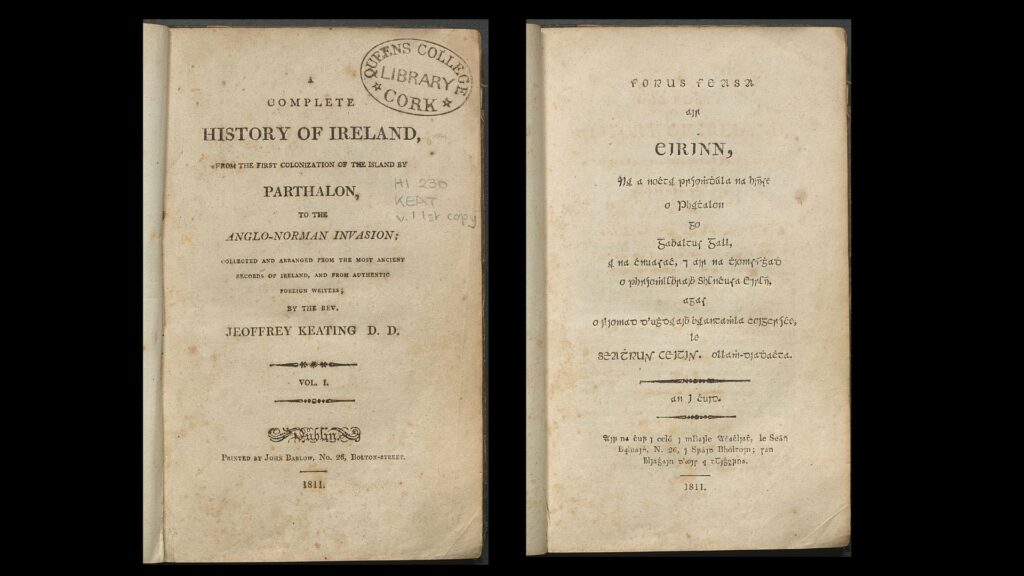
This nineteenth-century edition of the English translation done by William Holliday contains both the original Irish and the English translation printed alongside. This edition is covered in a green leather cover. Keating’s work details the history of the Irish people in a similar manner to the Annals of the Four Masters, tracing the origins of the Irish from the mythical past. However, unlike the Annals, Keating’s history delves freely into the rich details of the origins of the various peoples who came to the island of Ireland, within the context of biblically centred cosmos.
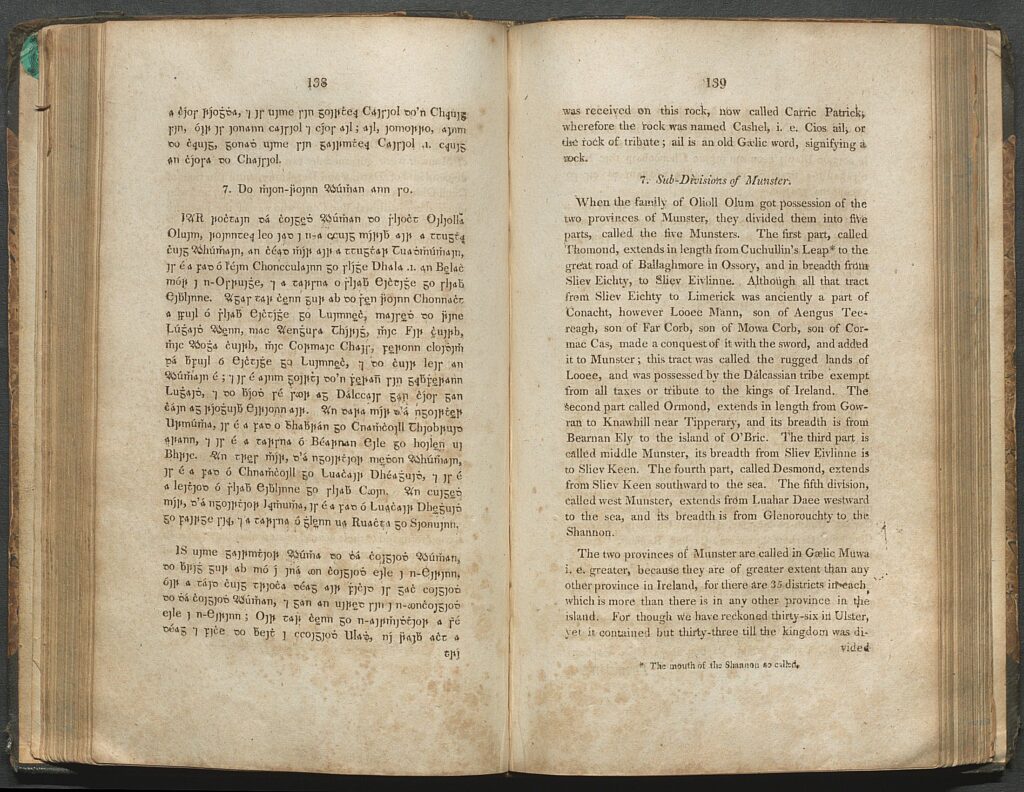
While the Annals offer what was regarded as a factual account of Ireland’s past, Keating’s book offers a vivid and narrative driven history. Although it reads more like a work of fiction than history, The History of Ireland reveals how the early modern Irish viewed their own origins and the past peoples of their country. Keating’s work steeped in the medieval concept of the world, reveals the medieval perception of history and shows how the narratives and stories were essential in the construction of the Irish identity in the seventeenth century. As with the Annals Keating approaches Irish history in relation to the Bible, as he attempts to link the events of the Irish past to biblical events. For example, he dates the invasion of Ireland by Parthalon to twenty-two years before Abraham’s birth.
Working with Primary Sources – Part 2
These two books that have been in the possession of UCC (Queen’s College Cork) for over a century and a half are important sources which provide unique insights into Ireland’s past. The books are valuable publications that enable students and researchers to delve into medieval and early modern perceptions of the universe and its history, that revolved around the biblical events of the Old and New Testaments. The books also provide opportunities for the student to sharpen their own research skills, while teaching them about constructions of Ireland’s origins in the medieval and in the early modern times.
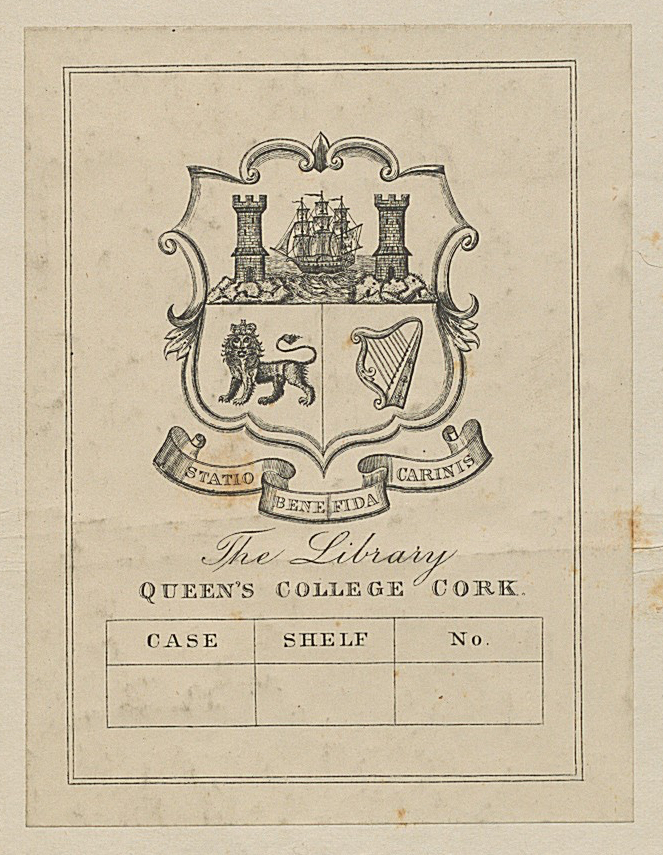
Further Reading
“Annals of the Four Masters,” Royal Irish Academy.
Bhreathnach, Edel, Ireland in the Medieval World AD 400-1000: Landscape, Kingship and Religion, (Dublin, 2014).
Cahill, Thomas, How the Irish saved civilisation: The untold story of Ireland’s heroic role from the Fall of Rome to the Rise of Medieval Europe, (London, 1995).
A classified catalogue of the books Contained in the Library of the Queen’s College, Cork: with a supplement, bringing it down to November 1st 1860, (Dublin, 1860).
Connellan, Owen, trans. The Annals of Ireland: Translated from the Original Irish of the Four Masters. With annotations by Philip MacDermott, and the translator, (Dublin, 1846).
Crooks, Peter, Duffy, Sean, The Geraldines and Medieval Ireland: The making of a myth, (Dublin, 2016).
Dowham, Clare, Medieval Ireland, (Cambridge, 2018).
“Geoffrey Keating (Seathrún Céitinn)’s Foras feasa ar Éirinn,” Royal Irish Academy.
Keating, Jeoffrey. A complete history of Ireland: From the first colonization of the island by Parthalon to the Anglo-Norman invasion collected and arranged from the most ancient records of Ireland, and from authentic foreign writers. Trans. by William Holliday, (Dublin, 1811).
